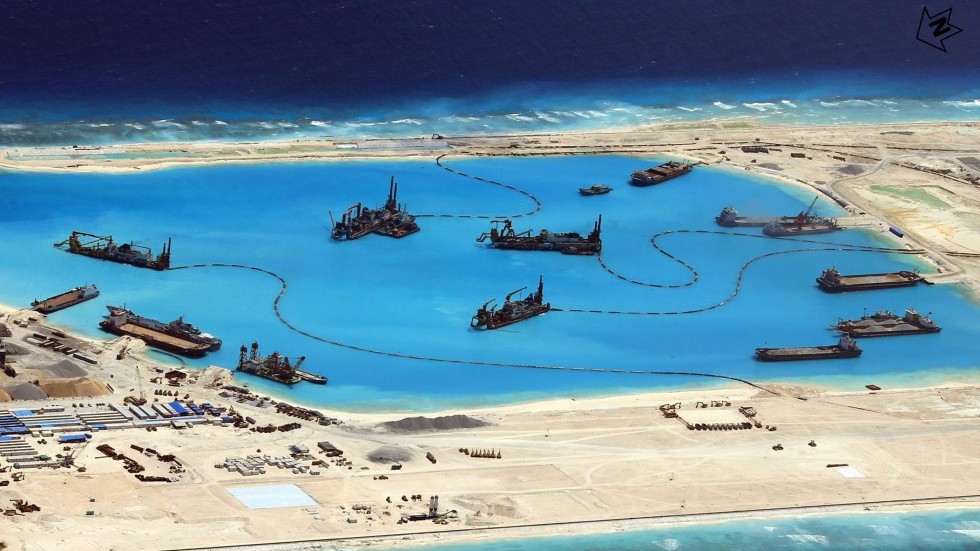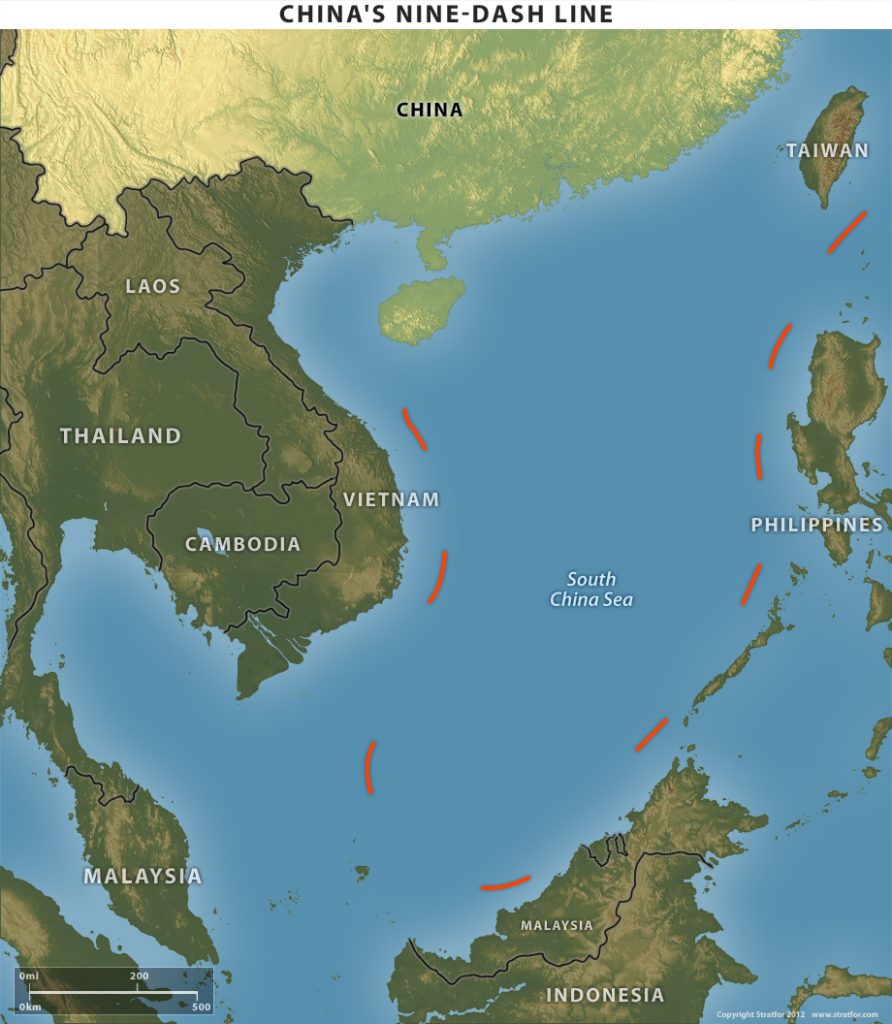- GOLD IRA
- Download Our 2024 Precious Metals IRA Investor’s Guide.
Click Here  Gold IRA
Gold IRA
 Investing
Investing
-
- CRYPTO IRA
- PRICES & STATS
- RETIREMENT PLANS
- BLOG
 Questions? Call (888) 820 1042
Questions? Call (888) 820 1042
New Tensions in the South China Sea Argue for Holding Gold
Disclosure: Our content does not constitute financial advice. Speak to your financial advisor. We may earn money from companies reviewed. Learn more
Last Updated on: 14th November 2017, 03:05 pm

Even as American President Trump was preparing to leave for his Asian tour last week, the Chinese had started testing a new deep water dredging ship capable of building artificial islands. More troubling still, new satellite images revealed proof that the Chinese were again reclaiming and constructing islands in a long-disputed part of the South China Sea as Reuters reported.
Geopolitical instability such as this warns you to include gold in your retirement portfolio. Gold still glitters for many world leaders precisely because of its ability to protect against market turbulence. Now is the time to think about IRA- approved metals before the situation escalates any further.
Chinese Dredging Ship Could Be A Game Changer
After a period of relative calm, the Chinese have again ratcheted up the tensions in the territorial disputes of the South China Sea. Their new dredging vessel proves to be an excavation ship they can utilize to reclaim land from the sea, per their own state run media. What makes this ship special and worrisome is that it is called the biggest such ship built in Asia.
At 140 meters long, this dredger named the Tian Kun Hao can collect as much as 6,000 cubic meters in sea bottom sand in only an hour. It has a depth range of 35 meters under the water. The vessel then moves and piles the sand so that it is able to develop new islands. These specifications make it considerably more powerful than others the Chinese have deployed to the region, as Senior Asian Adviser Bonnie Glaser from the Center for Strategic and International Studies noted.
Already this has caused suspicion and fear that the Chinese will send it to the disputed South China Sea once it finishes its tests and patrols. Other countries in the region have reason to be concerned. China has demonstrated a highly criticized history of ambitious territorial claims and military threats to enforce them.
It is why countries like the Philippines are concerned that they will employ the ship in building larger and more artificial islands throughout the South China Sea. Defense Secretary of the Philippines Delfin Lorenzana explained their fears with:
“The mere presence is a little bit concerning. Where it is going, we do not know. We are constantly monitoring the movement of the ship. Eventually, the Chinese might dredge more.”
The Chinese have already put ships such as this to work building up seven different fortified islands. Today a number of these host military facilities including missile bases, air force fields, and radar systems. All of these are located in waters that are international and claimed by several countries throughout the region.
Conflicting sovereignty claims over the seas come from the Philippines, Vietnam, Taiwan, Malaysia, and Brunei. This map below shows the Chinese claims:

The map reveals what the Chinese call the nine dash line. The government of China's Xi Jinping claims a thousand miles of waters south of their farthest shores, a move which international experts dispute.
The Chinese are Attempting to Claim Valuable Resources
It is no accident the Chinese are interested in these prized waters. Besides the presence of islands and coral reefs along critical global trade lanes, there are abundant fishing waters and rights and possible natural gas and oil reserves over which to gain control.
Until the latest satellite images showed the Chinese were again building up their islands, they had claimed to be attempting to resolve the issue diplomatically. The government in Beijing spoke of arrangements which they had agreed to separately with Vietnam and the Philippines to negotiate all disputes peacefully. China had also promised that they would not take over additional islands or artificial islands.
The Philippines were sticking to such a deal when their President Rodrigo Duterte ceased his building on a Spratly Islands sandbar. These are islands both the Philippines and China each claim.
American President Offers to Arbitrate Territorial Waters Dispute
The situation is concerning enough that U.S. President Donald Trump offered his help in mediating the territorial dispute of the South China Sea while he was on his way to the ASEAN conference in the Philippines.
This gathering of Southeast Asian nations includes four out of six countries who claim islands and territorial waters in the area. The Chinese response came from Geng Shuang the spokesman for the Chinese foreign ministry. He offered that:
China is committed to “solving the relevant disputes through dialogue and consultation with the countries directly concerned and maintaining peace and stability in the South China Sea. We believe that regional countries have the will, wisdom, and capability to deal with the South China Sea issue in a proper way. Meanwhile, we hope the countries outside the region will respect regional countries' efforts in safeguarding peace and stability in the South China Sea and constructively contribute to that.”
It should come as no surprise that the Chinese rebuffed the U.S. President's offer. They have consistently been against American interference in their territorial conflicts. The Chinese were incensed by what they considered to be United States naval violations of their so-called South China Sea territorial waters.
Chinese Still Refuses to Acknowledge UN Tribunal Ruling on South China Sea Claims
Ultimately, the issue comes down to this. As the Philippine President Duterte warned, the Chinese leader refuses to give up their international water territorial claims. This remains the case even after a United Nations tribunal ruled that China's vast territorial claim throughout the South China Sea is invalid.
China considers the ruling against them to be a “sham.” They would not even recognize the authority of the international court to make such a decision, refusing to even be a party in the arbitration case. Duterte warned about China's intransigent position on the sensitive and tension-wracked issue with:
“If you go to the negotiating table and you start with the statement that I am here to claim validity of our ownership, you're wasting your time. They will not talk about it.”
Because of this, Duterte has not felt he could demand that the Chinese obey the territorial ruling.
The U.S. Has Interests In the South China Sea As Well
The United States also has interests in the resolution of the South China Sea conflict. America does not claim territorial rights of the trading and possibly oil bearings seas. Instead the U.S. wants to make certain that full international freedom of navigation and flights are maintained. The superpower would also like to see the tensions peacefully resolved.
Yet the expanded U.S. military involvement in the area does more than just present a balance to China and its ambitions, which several of the regional countries have encouraged. It creates the possibility for accidental military clashes between the world's two largest economies.
Ongoing South China Sea Geopolitical Tensions Mean You Need Gold
This is only one of the many geopolitical issues threatening global stability these days. Because of this, you need gold to help protect your investment and retirement portfolios against such Black Swan events as these. The yellow metal outperforms in times of market turbulence.
It is why gold makes sense in an IRA. Now is the time to consider a Gold IRA rollover before global tensions escalate any further. These days you are allowed to use offshore storage locations for your Gold IRA.



 Silver
Silver Gold
Gold Platinum
Platinum Palladium
Palladium Bitcoin
Bitcoin Ethereum
Ethereum






